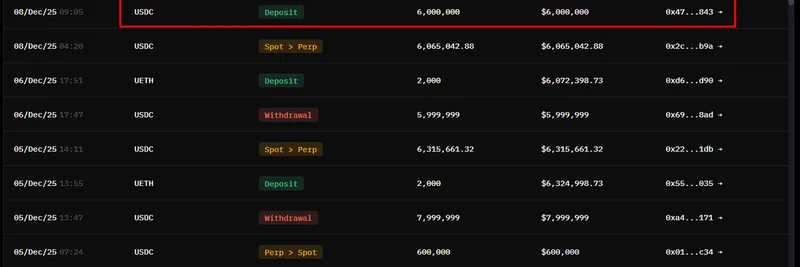In the wild world of crypto, flash crashes can send traders into a panic, but for some savvy liquidity providers (LPs), they're just another chance to stack fees. A recent tweet from @narkokek on X (formerly Twitter) breaks it down perfectly, showing why the Meteora LP Army was "printing" – crypto slang for earning yields or fees – even as markets tanked.
The tweet, posted on October 22, 2025, asks: "Why did @met_lparmy print during the Flash Crash? While others panicked, Meteora's fees jumped up." It includes a short video clip from what looks like a podcast interview, featuring insights from Meteora team members or affiliates. If you're new to this, Meteora is a decentralized exchange (DEX) protocol on Solana that specializes in dynamic liquidity market makers (DLMM). Unlike traditional constant product AMMs like Uniswap, Meteora's pools adjust dynamically to market conditions, optimizing for things like fees and volume.
Breaking Down the Video Insights
The clip features a discussion where one speaker explains the philosophy behind Meteora's fee structure. "You usually don't make as much money as when you maximize fees," they say, emphasizing that prioritizing volume isn't always the best play. Instead, during high-risk periods like a flash crash, you should get compensated more for the risk you're taking as an LP.
The key revelation? During the flash crash that hit just a few days before the tweet (likely referring to a sharp dip in Solana-based assets), Meteora's fees actually increased, while other platforms stayed flat. "Fees grew bigger, while other platforms stayed the same," the speaker notes. This means LPs on Meteora were earning more per trade as volatility spiked, turning chaos into cash.
Why does this matter for meme tokens? Solana is meme coin central – think tokens like Dogwifhat or Bonk that can swing wildly on hype or dumps. Flash crashes often hit these volatile assets hard, creating massive trading volume. For LPs providing liquidity in meme token pools on Meteora, that translates to higher fees without the pools drying up or impermanent loss wrecking your position. It's "gud fee tek," as one reply puts it – good fee technology that keeps printing no matter the market mood.
Why Meteora Stands Out in DeFi
Meteora's DLMM model is designed for this exact scenario. In a standard liquidity pool, fees are fixed, so during a crash, you might see more volume but not necessarily better returns after accounting for risks. Meteora flips the script by adjusting fees based on real-time conditions, ensuring LPs get paid for the turbulence.
Replies to the tweet echo this sentiment. @MeteoraAG chimes in: "No matter the market conditions, LP Army can always print." Others like @lostsol404 add, "LP Army can print in every market condition." It's a community vibe, with users hyping the resilience of providing liquidity on the platform.
If you're a blockchain practitioner dipping into meme tokens, this is gold. Providing liquidity isn't just about parking your assets; it's about strategic positioning in protocols like Meteora that reward you during the dips. Check out the full tweet here to see the clip yourself and join the conversation.
Tips for Getting Started with Meteora LPs
Ready to join the LP Army? Start by heading to Meteora's site to explore their pools. Focus on high-volatility pairs involving popular Solana memes – they often see the biggest fee spikes during events like flash crashes. Remember, always DYOR (do your own research) and consider impermanent loss risks, but with dynamic adjustments, Meteora makes it easier to "print" sustainably.
In the end, this tweet isn't just a flex; it's a reminder that in DeFi, smart tech can turn market mayhem into opportunity. Stay tuned to Meme Insider for more breakdowns on how meme tokens and liquidity strategies intersect in the ever-evolving crypto space.

